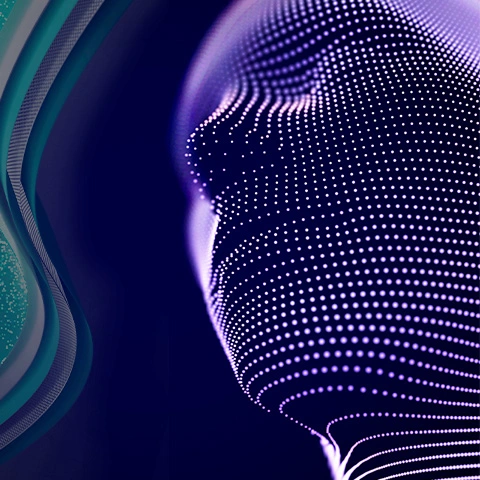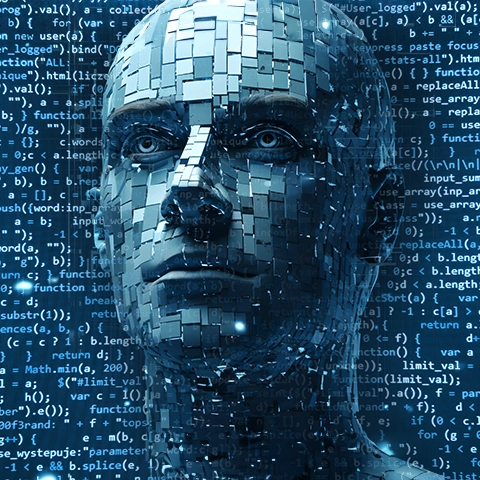In the grand artificial intelligence (AI) space, generative AI (GenAI) systems are driving significant shifts and unlocking innovative business opportunities for technology and service providers. While GenAI offers unprecedented capabilities in content creation, automation, and personalization., these systems also pose significant challenges that must be navigated with care and expertise. The power and complexity of Gen AI necessitate rigorous testing to mitigate risks and maximize potential.
This blog navigates the sophisticated landscape of testing GenAI systems, highlighting key challenges and strategies to ensure their reliability and security. Let us deep dive into the key aspects of this intricate journey, exploring challenges, strategies, and best practices for ensuring the reliability and safety of generative AI systems.
Whether you're an AI enthusiast or a seasoned development professional, understanding and implementing effective testing methodologies may be crucial to advancing in this dynamic field.
Key Trends and Regulations in AI
As AI technologies evolve, global legislative efforts such as the European Union's AI Act and the US Executive Order on AI are being implemented to ensure system security and reliability. These regulations aim to establish comprehensive standards addressing ethical considerations and technical benchmarks. GenAI systems face significant data privacy and security challenges, particularly due to their reliance on human-generated data, which raises copyright and privacy concerns. Additionally, the risk of data poisoning attacks threatens their integrity.
While 40% of organizations plan to increase AI investments, 53% acknowledge cybersecurity as a major risk. - McKinsey Global Survey
Despite extensive training, AI systems can still exhibit biases, underscoring the need for continuous improvement. For example, OpenAI's chatbots have shown instances of racist stereotyping even after anti-racism training, emphasizing the ongoing risks and challenges.
Challenges to Testing GenAI Systems
Testing generative AI systems is no small feat, as these challenges illustrate:
Non-deterministic Nature
AI systems do not always produce the same output for the same input, making it difficult to predict and verify their behavior.
Lack of Transparency
The 'black box' nature of AI algorithms often obscures understanding of how decisions are made.
Resource Intensive
Testing AI systems requires significant computational power and time.
Ethical Considerations
Ensuring AI operates within ethical boundaries adds a layer of complexity.
Evolving Domain
The rapid pace of AI advancements necessitates constant updates to testing methodologies.
Lack of Automation
Automating tests for AI systems is challenging due to their dynamic nature.
Strategies for Testing Generative AI Systems
To tackle these challenges, several strategies can be employed: In the era of automated testing, we cannot downplay the role of human intervention due to the myriad challenges and dynamic nature of Gen AI. Here are three key approaches, backed by real-world case studies, that showcase the importance of human insight in ensuring the quality, safety, and efficacy of your Gen AI solutions:
1.Benchmarking
Setting specific benchmarks tailored to the AI system's intended capabilities is crucial. This involves defining benchmarks, establishing metrics, ensuring data diversity, and monitoring the system for errors and biases regularly.
- Defining Benchmarks
Tailor benchmarks to guide the design process and set clear expectations for system performance. - Establishing Metrics
Identify measurable quality metrics to evaluate system effectiveness. - Diversity of Data
Use diverse datasets to ensure the system can generalize across different regions and demographic groups.
2.Red Teaming
This involves assembling specialized teams to simulate attacks and proactively identify vulnerabilities. Red teaming efforts often prioritize safeguarding against data leaks and system hijacking, thereby preventing financial and reputational damage. It focuses on implementing guardrails within AI systems, protecting users from harmful content, and exploring potential risks and their impacts.
Ensuring Robustness in Generative AI Systems through various techniques
Societal Harms Assessment
Evaluating the impact of AI on society and mitigating potential negative consequences.
Tone Analysis
Verifying that generated content maintains the intended and appropriate tone.
Hijacking Simulations
Testing the system's resilience against unauthorized control.
Load/Performance Testing
Measuring system performance under varying loads to ensure reliability.
Data Extraction Tests
Assessing the system's ability to safeguard sensitive information.
Malware Resistance
Ensuring the system’s defenses against and responses to malware attacks are effective.
Prompt Overflow
Testing the system’s response to large input volumes to disrupt its primary function.
Legal Commitments
Evaluating the AI's potential to make unauthorized commitments or communicate false information regarding company policies, discounts, or services.
API and System Access
Assessing the AI's interaction with external tools and APIs to identify risks of unauthorized data manipulation or deletion.
Adversarial Testing
Designing inputs to intentionally mislead the AI, uncovering weaknesses in its algorithms.
Harnessing automation in Gen AI testing
Have you ever thought about how we could automate the testing of generative AI systems? While the idea might seem daunting, the complexity of the task hasn't deterred developers from exploring possibilities. As the capabilities of generative AI continue to evolve, so too does the need for robust testing frameworks that can keep pace with these advancements. One promising development in this area is Microsoft's PyRIT, a tool that shows potential in offering an automation framework. Such tools could empower professionals to build strong red team foundations for their applications, enhancing the reliability and security of generative AI systems.
However, fully automating the testing of generative AI remains a challenging endeavor. The complexity, unpredictability, and nuanced output of these systems make it difficult to create automated testing processes that are both effective and reliable. Yet, researchers are actively exploring methods to alleviate these challenges and automate key aspects of generative AI testing, such as generating prompts, automating evaluation metrics, and detecting anomalies. As automation tools and techniques advance, the prospect of reliably automating the testing of generative AI systems becomes increasingly attainable. This not only has the potential to streamline the development process but also to enhance the overall robustness of AI applications in real-world scenarios.
Testing generative AI systems is a complex yet crucial task, requiring a multipronged approach that combines legislative compliance, stringent security protocols, and innovative testing strategies, like below:
- Simplifying prompts for AI testing is essential.
- Overloading the testing AI with excessive context does not improve accuracy but sets two AIs against each other with a high probability of error.
- Excessive context can hinder accuracy by creating conflicts between AIs, increasing the likelihood of errors.
- Removing unnecessary context and focusing on direct comparisons helps validate the accuracy of responses.
- The best use of AI in testing involves generating diverse question formats and validating the accuracy of answers even in ambiguous situations.
By navigating these challenges with care and precision, we can harness the full potential of generative AI while demonstrating a commitment to safety and security and offering opportunities to deliver value to organizations.


